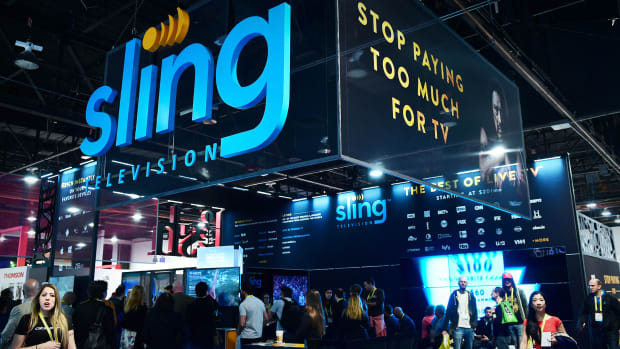Traditional cable television has been losing customers for years. People have been cutting the cord because cable costs a lot of money, more than many other utilities and more than many people are willing to pay.
A review of publicly available data by DecisionData.org found the average cable package costs $217.42 a month. That's more than many households pay for other utilities combined, according to the website.
It also notes that cable-package prices are similar regardless of the size of a household, U.S. News and World Report reported.
Pricing, of course, can vary widely, and it can cost much less in the first year or two of service. But cable is significantly more expensive than streaming services like Netflix (NFLX), Walt Disney's (DIS) Disney+ and Hulu, and a variety of others.
Streaming cable -- Hulu Live, Dish Network (DISH) Sling TV, Alphabet's (GOOGL) YouTube Live and Fubo (FUBO) -- was supposed to be a sort of middle-ground alternative.
Streaming cable offers smaller bundles of channels for less money than traditional wired cable. Basic packages run $35 to $70, with available add-ons that can bring the cost much higher. The idea was that people would drop their traditional cable subscriptions in favor of an alternative that was cheaper but still gave them some of their favorite channels live.
That makes sense -- but it's not what has actually happened. Streaming cable, like traditional wired cable, has started to lose subscribers.

Image source: Frederic J. Brown/AFP via Getty Images
Cord Cutting Continues
Cable TV in 2014 had just over 100 million subscribers in the U.S. That number has fallen steadily since then, with 1.95 million Americans cutting the cord in the first quarter of 2022, according to data from Leichtman Research Group.
"The top pay-TV providers now account for about 74.1 million subscribers – with the top seven cable companies having about 40.5 million video subscribers, other traditional pay-TV services having 26.2 million subscribers, and the top publicly reporting internet-delivered (vMVPD) pay-TV services having about 7.4 million subscribers," the research company shared.
That's a 25% drop for the industry since 2014, a number that's actually worse because those 7.4 million streaming cable customers generally pay a lot less for the service than traditional cable subscribers do.
Cable's losses hit every company that Leichtman includes in its report, Comcast (CMCSA) and Charter Communications (CHTR) -- the two biggest players -- lost 512,000 and 112,000 subscribers respectively. Satellite providers DirectTV (300,000) and Dish (228,000) both posted losses as well.
The biggest concern, however, might be that streaming cable leaders Hulu Live (200,000), Sling TV (234,000), and FuboTV (73,000) all posted customer losses as well. Those drops literally put the future of the cable bundle in doubt.
What Does Cord Cutting Mean to You?
Traditional cable forces customers to take bundles of channels. You don't get to pick and choose which channels you get and the amount you pay includes anywhere from a few cents to a few dollars for every channel in your package.
That means that you may not watch some channels that your friend loves and your friend may not watch your favorites, but each of you subsidizes what the other watches.
If cord cutting continues -- and there's no reason to believe it won't -- budgets will get smaller at big cable networks and smaller ones won't be viable. Some cable networks, of course, have replaced lost revenue with streaming services, but that won't be possible for every channel.
As fewer people pay for cable, some channels will simply disappear, and others will cut back on their programming.
If we ultimately reach an a la carte world, everyone will pay more per channel (whether it be in a subscription or via streaming) to get exactly what they want. It's a potential end to a system that created a lot of choice and a move toward one where only the strongest players survive.










